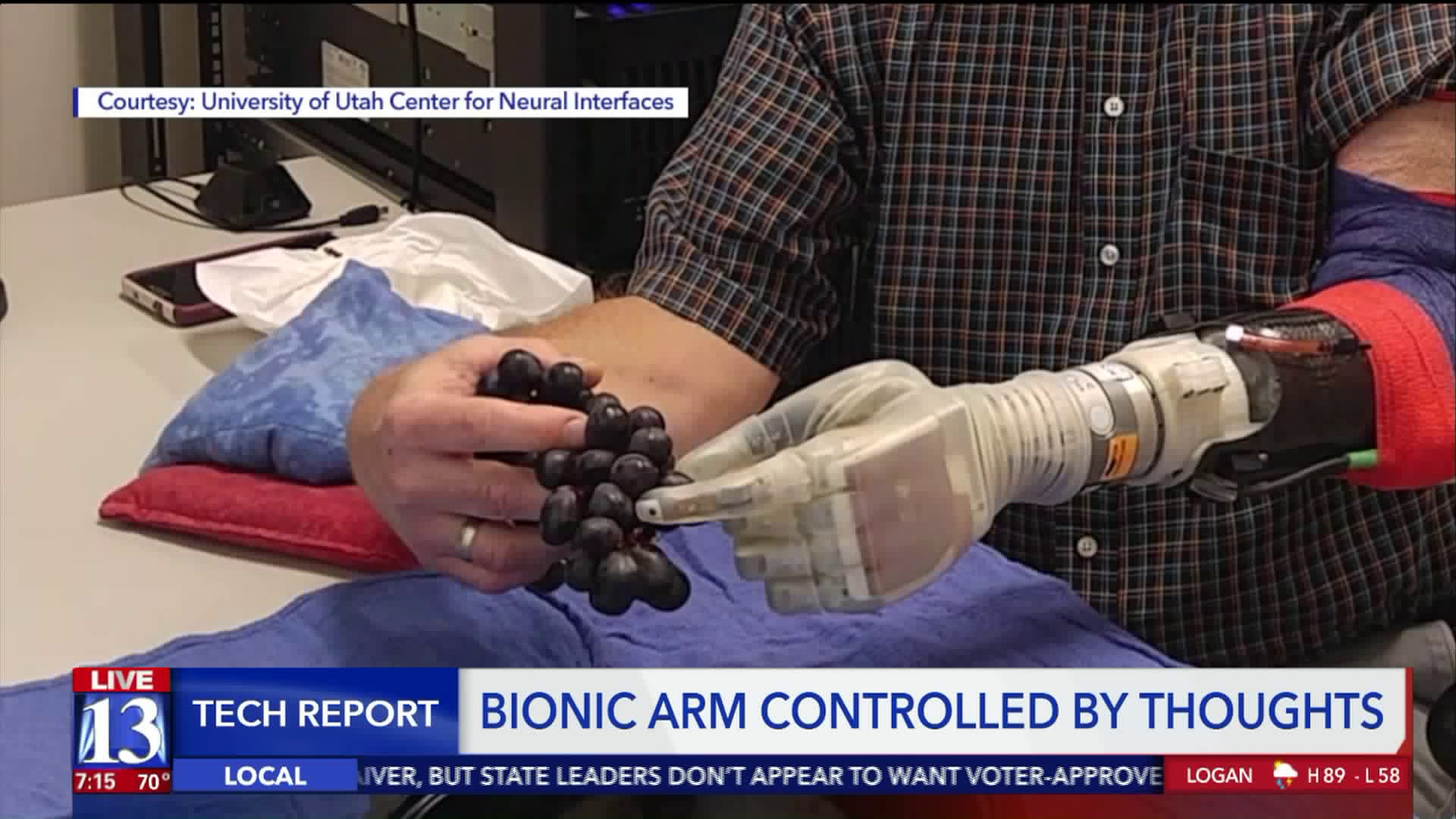WEST VALLEY CITY, Utah — Keven Walgamott lost his left hand and part of his lower arm after an accident about 17 years ago. Since then, he says it’s taken some getting used to.
He was left-handed, so he then had to learn how to do everything right-handed.
“I have a very wonderful supportive wife who has helped me through all of it both emotional and the physical," Walgamott said. "It’s been a process, but I’m pretty much able to do anything now that I could do before — but a little slower."
Now, a new clinical trial he’s a part of is giving him hope.
“We had to go through quite a process to get up to using the ‘LUKE Arm.’ They did a lot of testing, a lot of computer work, but by the time we got there, it was totally amazing,” he said.
The bionic arm he’s been using is called the "LUKE Arm" after the one Luke Skywalker uses in "Star Wars: The Empire Strikes Back."
The arm itself was made by a New Hampshire-Based company called DEKA.
University of Utah engineers say with their latest work, the arm does far more than just let people pick up objects.
“The basic idea ... is to recreate the human hand so that the user can move it in a dextrose and well-controlled but intuitive fashion just by thinking about it," said Gregory Clark, an associate professor of biomedical engineering. "And then, ideally, also get a sense of touch back from the hand so that they can actually feel the hand and ideally even feel whole again.”
This means Walgamott can perform more delicate tasks, like plucking grapes or picking up an egg, which would usually be impossible with a standard prosthetic arm.
His first experience with the Luke Arm was very memorable.
“I pulled my hand down a wall. It was a corrugated wall, and I was able to feel the bumps on the corrugation," Walgamott said. "That was a first time in 13 years that I’d ever done that... It about made me cry. It was exciting."
The engineers working on this project say the LUKE Arm taps into existing muscles and nerves.
"We can wiretap into those nerves and capture the signals coming down the nerves from the brain," Clark said. "If we translate those correctly … they’ll move by the person just thinking about moving their hand — just the way they used to for 20 years or 30 years before they lost it."
For now, the person using the LUKE Arm is either tethered to a stack of computers or can use a more portable device that requires an engineer to operate it.
“We’re trying [to move] towards more portable systems, as well as making them wirelessly," said Jacob George, a biomedical engineering student working with Clarke on the LUKE Arm.
Walgamott said he was sad he wasn’t able to take it out of the lab and go home with it, but the engineers involved hope to make that possible soon.
“To truly allow a person to go home alone and use it and set it up in whatever fashion they feel like doing, we’ll need to take it to the next level," Clarke said.
The engineers working on the LUKE Arm say they’re close to take-home trials, but they’re not quite there yet. They need approval from the government first, and they’re hoping to get that in either 2020 or 2021.
“It definitely comes from the movies. I mean, the hand that we’ve worked with is known as the ‘LUKE Arm,’ which is obviously named after Luke Skywalker," George said. "So we’re at an interesting point now where all this technology is starting to become a reality."
Despite the wait, Walgamott says he’s excited about what the future holds, especially after being able to hold onto his wife’s hands with both his biological hand and a bionic one.
“When I touched her hand, was able to feel, and then we eventually clasped hands with both hands," he said. "It was rather very emotional. Not only for me, but for her as well."
You can read more about Gregory Clark and Jacob Clarke’s work in the journal Science Robotics.



